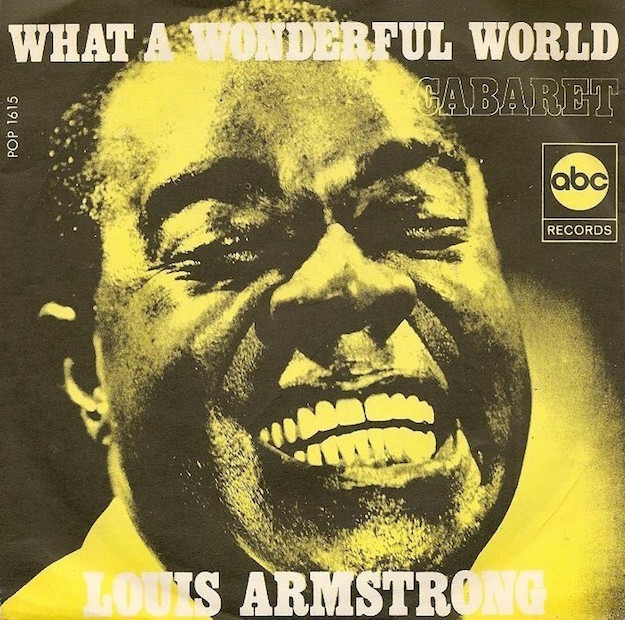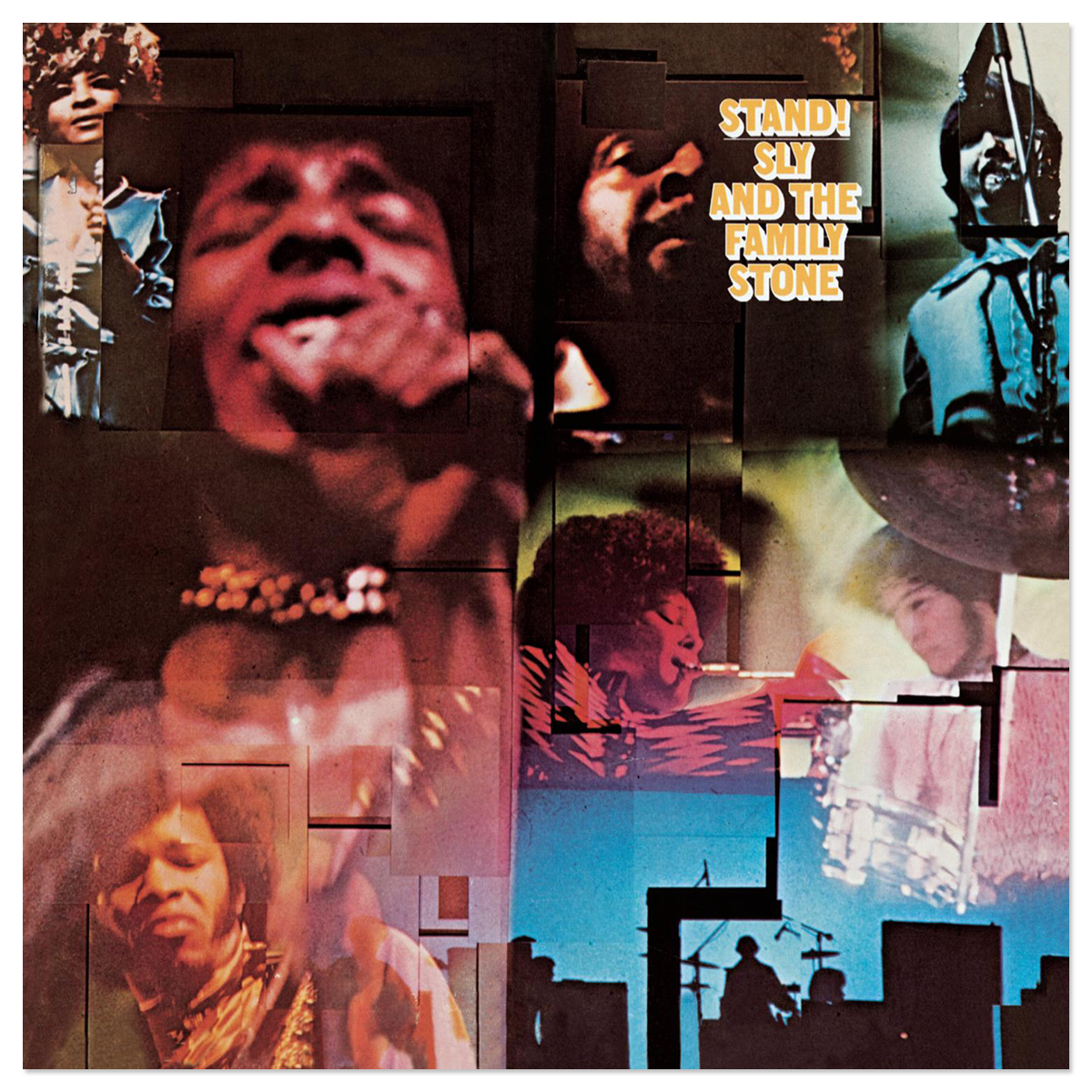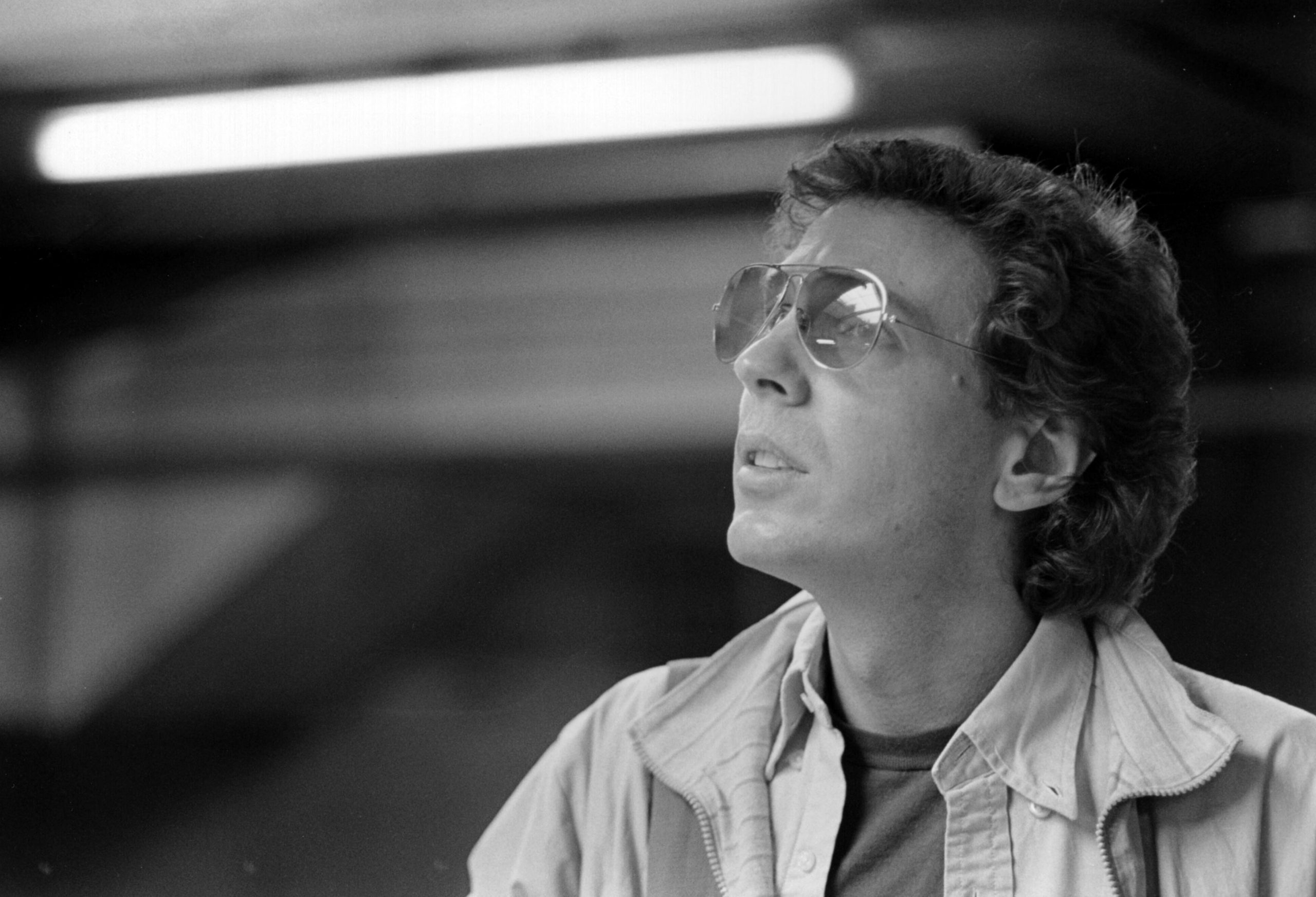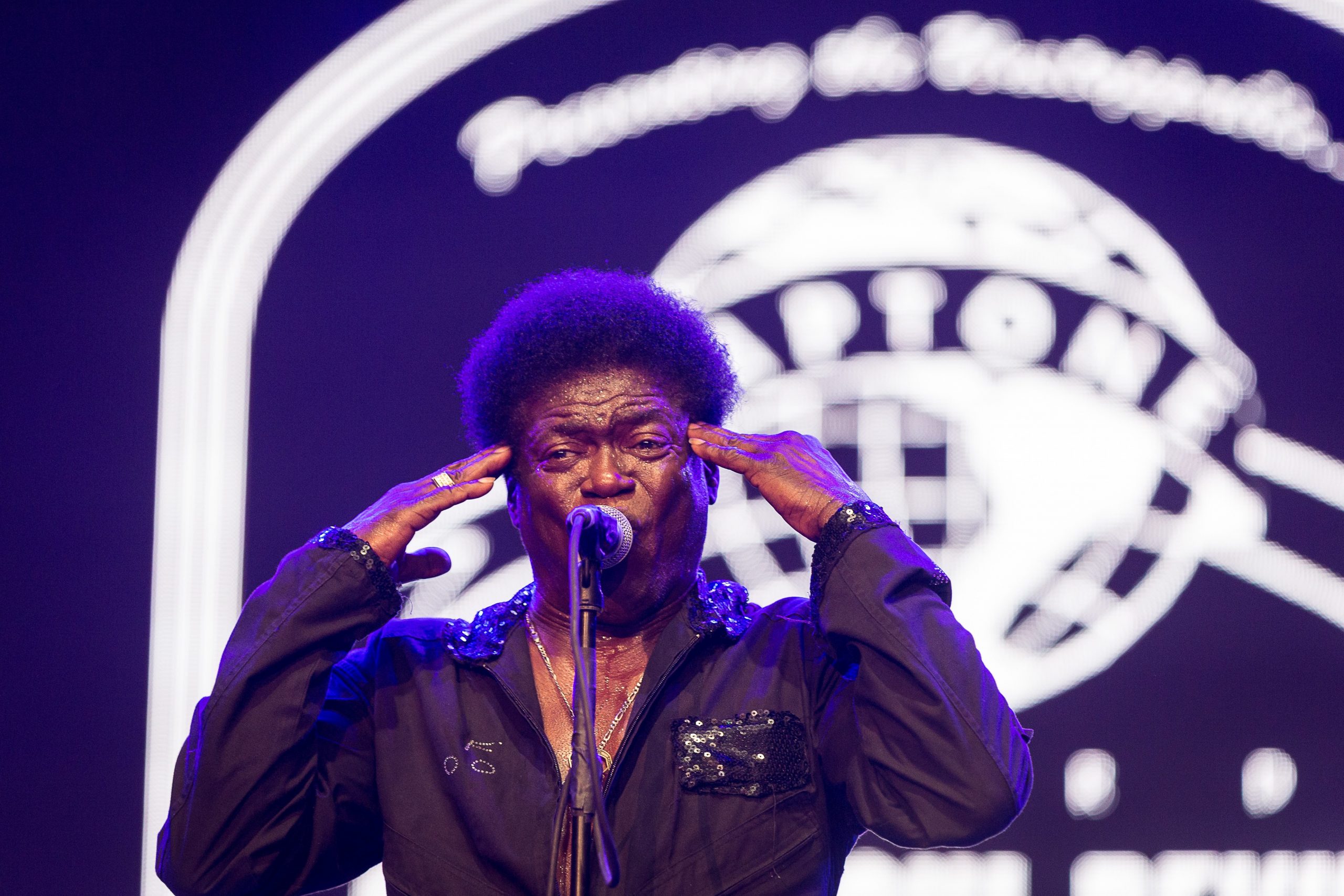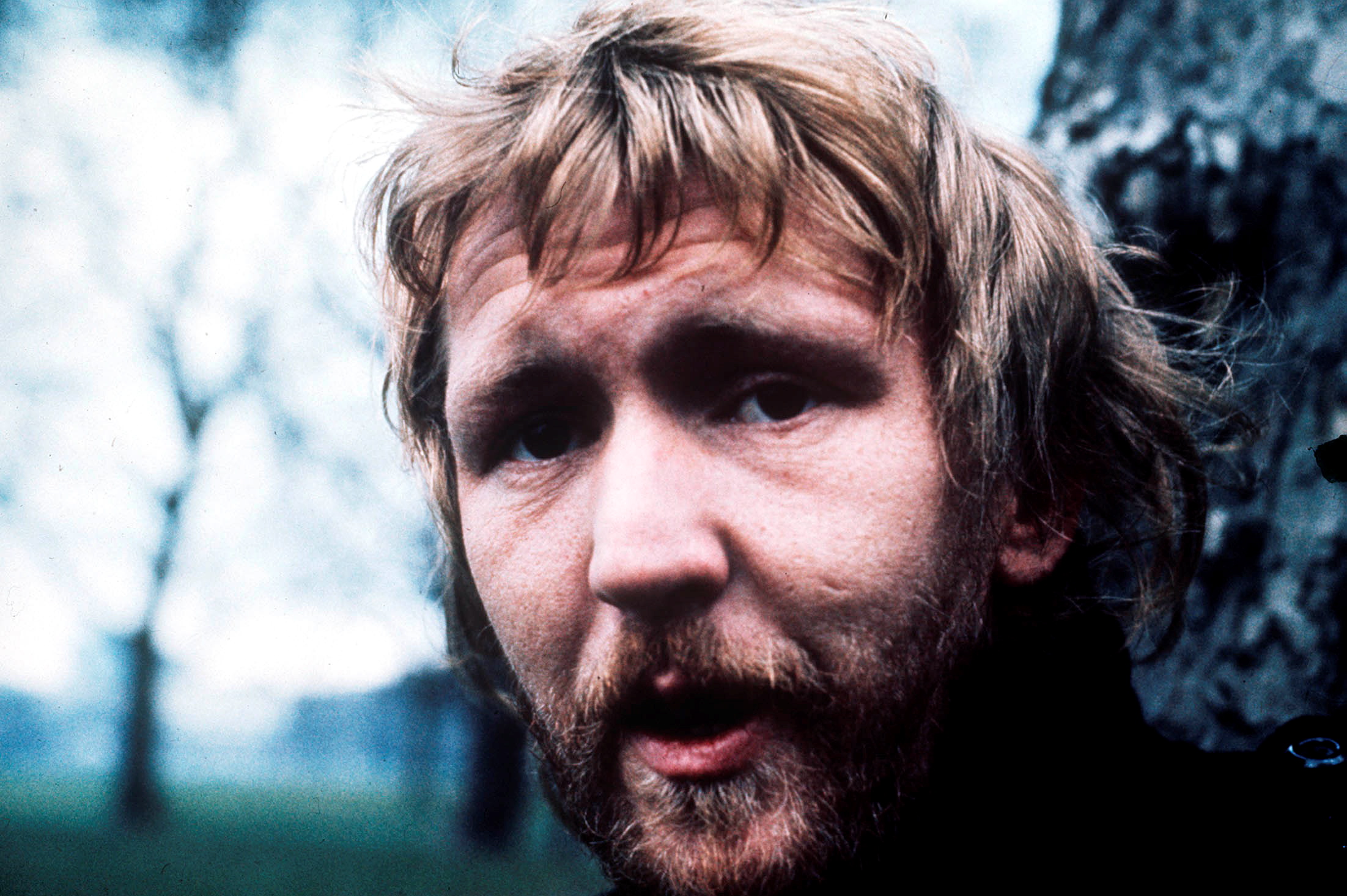Sometimes the line between irony and sincerity is drawn entirely by timing. Louis Armstrong's recording of Bob Thiele and George David Weiss's "What A Wonderful World" came out at a time when it felt more like a wish hoping to see fulfillment than an actual truth. It was recorded after a long hot summer of race riots in Tampa, Minneapolis, Buffalo, Newark, Milwaukee, Washington, D.C., and most infamously Detroit. And by the time it was released in fall 1967, the anti-war movement had become a center of musical activism to the point where folk singer Joan Baez was arrested just a few weeks later for blocking the entrance to Oakland's Armed Forces Induction Center with dozens of other protesters.
Maybe that, along with his reluctance to follow up Armstrong's smash hit "Hello, Dolly!" with a downtempo balled, was part of the reason why ABC Records' head Larry Newton loathed the song -- to the point where he had to be locked out of the studio so it could actually be recorded -- and did the barest minimum to promote the single. He could only do so much, though: While it didn't crack the Billboard Top 100 in the States, it became a massive hit in the UK, spending a month at #1 there in spring 1968 and eventually becoming the biggest single of the year there. Its afterlife has largely been filled with tongue-in-cheek juxtapositions, from its (anachronistic) appearance in Barry Levinson's 1987 film Good Morning, Vietnam that finally pushed it to the American Top 40 to a breathtakingly grisly place soundtracking America's foreign policy atrocities in Bowling For Columbine.
It might've sounded like a phony sentiment at the time to many, at least enough to actually force Armstrong's hand after the fact. Though his own "wonderful world" he envisioned during his performances was centered specifically around the neighborhood in Queens where he lived and the three generations of families that formed the community, he made a point during a 1970 performance to justify what would become one of his biggest signature songs: "'Hey Pops, what you mean what a wonderful world? How about all them wars all over the place? You call them wonderful? And how about hunger and pollution? That ain't so wonderful either.' Well how about listening to old Pops for a minute. Seems to me, it ain't the world that's so bad but what we're doin' to it. And all I'm saying is, see, what a wonderful world it would be if only we'd give it a chance. Love, baby, love. That's the secret, yeah. If lots more of us loved each other, we'd solve lots more problems. And then this world would be better." So there's another line to draw between irony and sincerity -- and a few versions of this song on both sides (sometimes simultaneously).
Esther Marrow (1969)
Legend has it that Newton wasn't the only one to recoil at the sentimental string arrangements of "What A Wonderful World" -- when Armstrong read the melody for the first time, he was said to remark "what is this shit?" The lyrics changed his mind, of course, but there are other ways around that arrangement, as first really taken advantage of in this 1969 recording by gospel/soul singer Queen Esther Marrow. Marrow, who has one of the great far-flung resumes (she appeared as a backup singer on Bob Dylan's Empire Burlesque and acted as Mama Green in The Last Dragon the same year), capped off a decade of civil rights activism and legendary appearances with Duke Ellington with the album Newport News, Virginia -- another Bob Thiele production, and a top-notch soul-jazz album in its own right. And for Marrow's "What A Wonderful World," Thiele turned to an arrangement by none other than Gene Page, who had helped Phil Spector assemble the Wall of Sound apotheosis "You've Lost That Lovin' Feelin'" five years previous and subsequently became one of the most important engineers of lavish orchestral studio R&B. Marrow's gospel-honed voice does a major number here -- she absolutely nails the sense of joyful, quavering awe that a sincere rendition of this song lives or dies on -- while Page builds up the soulful opulence like he's got a grudge match going with David Axelrod; the horn section alone drags this one kicking and screaming (happily) out of easy listening.
The Flaming Lips (1990)
For the most part, the first 20 or so years' worth of "What A Wonderful World" covers didn't stray too far from the original; aside from Marrow's hard-hitting soul version, the song's success as a standard mostly relegated it to easy listening releases whose biggest musical risks involved interpreting it into another language. Good Morning, Vietnam might have changed that, but it's still pretty staggering that one of the first versions released after the movie gave the song another lease on life came from one of the biggest torchbearers for late-generation psychedelia. The Flaming Lips' "What A Wonderful World" closes out In a Priest Driven Ambulance, the last album they released on an indie label before being signed to Warner Brothers, and just in the context of making it the closer of a frequently noisy concept album about Wayne Coyne's off-kilter appreciation of religion, there's something askew there. This version isn't jokey or ironic per se, but it sounds dazed -- even with nothing but that sparse bass, guitar, occasional feedback, and ambient outdoorsy sound effects in the first verses, you can definitely find the unsettling nature to Coyne's shaky-sounding grasp on his own wonderment. And then they fire up the wall of distortion at the bridge and oh, right, for a while the Lips were halfway to shoegaze, weren't they?
Israel Kamakawiwo'ole (1993)
The next time you click on a cute animal video on Facebook and are assaulted with a soundtrack of twee ukelele strumming, pour one out for the late Israel Kamakawiwo'ole, near-universally recognized as one of the greatest to ever play the instrument. What lazy library music turned into a twerpy cliche, Kamakawiwo'ole originated as something stirring and cynicism-proof -- especially in its most well-known version, an unaccompanied demo recording paired with "Somewhere Over The Rainbow" and played solo with just his uke and his Voice Of Hawaii. That latter aspect is what most latter-day copies are sorely missing: Iz's voice is one of those instruments that only sounds more affecting from its lived-in qualities, like the soft rasp that made his performances sound booming and gentle at the same time. Kamakawiwo'ole's version, like Armstrong's, saw a latter-day resurgence thanks to movie soundtracks when this version from his 1993 album Facing Future was used in the 1998 film Meet Joe Black and subsequently became ceaselessly used in films and TV from there on out -- another case of a great performance threatened by overexposure. But at least it spread his legacy.
Nick Cave & Shane MacGowan (1992)
Why settle for one incongruity when you can have two? Nick Cave duetting with the Pogues' Shane MacGowan is one of Those Ideas that seems both obvious in its potential vulgarity and brilliant in its possible outcome, and it's harder to think of two better different-yet-complementary singers who'd be able to give more distinct upendings of the sentiments behind "What A Wonderful World." The video's enough to make it plain as day, situating the thousand-yard-glowering Cave and the sleepy-eyed, verge-of-collapse MacGowan in front of a glittery backdrop that looks like the stage of a cheap karaoke joint, and the point where they literally shake hands at the "I see friends shaking hands" line is so smartassed it's heartwarming. It's not a joke, though -- it's more a couple of artists well-versed in morbid transgression finding a way to make an uplifting song sound as yearningly tragic as their own best ballads. And given their divergent paths at this time -- Cave was in the midst of a career-cementing run of classics that only a late-'90s hiatus would interrupt, while MacGowan's substance abuse exiled him from the band he'd been the most iconic voice of -- there's an additional layer of sadness beneath it all.
Joe Pesci (1998)
In 1968, a 25-year-old Joe Pesci released an LP on Brunswick -- home to Jackie Wilson and the Chi-Lites -- titled Little Joe Sure Can Sing! The all-covers album included included three Bee Gees songs, three Beatles songs, and four other pieces of evidence that he was infinitely better off with Martin Scorsese as a mentor than Frankie Valli. (Listen to him sing "The Fool On The Hill" here, and then try to figure out what you will do with your life afterwards once it's irrevocably changed.) Aside from a 1972 novelty Christmas single cut with then comedy partner/future shinebox requester Frank Vincent, it took 30 years to follow up that solo album, what with the whole Academy Award-winning actor thing intervening. And while that '68 debut was attributed to "Joe Ritchie," Pesci's sophomore record is quasi-credited to Vincent Laguardia Gambini -- as in his vulgar, wise-assed lawyer character from the courtroom comedy My Cousin Vinny. Just so you know what you're in for. Pesci's singing voice makes a little more sense with a couple decades' worth of memorable roles as a short-fused, often violent motormouth behind him -- get it, it's a schtick now -- and his voice's aged into the kind of devilish weird-old-guy vibe you'd want from a self-aware mid-tier lounge singer ("And I think t'myself… wow, whatta beauty-ful world"). It's at least more entertaining than "Wise Guy," the single from this album that was basically "what if Blondie's 'Rapture' but guido stereotypes." That this album came on the heels of his two least-loved movies, 1997's Eight Heads In A Duffel Bag and Gone Fishin', might explain this supposedly out-of-nowhere change of pace -- that, and Pesci's decision to retire from acting after 1998's Lethal Weapon 4.
Tony Bennett & k.d. lang (2002)
Part of the mythos around "What A Wonderful World" is that the song was supposedly offered to Tony Bennett first, but Bennett turned it down for some unspecified reason or another. As it turns out, Bennett wound up recording his own version a couple years later anyways, closing his 1970 LP Tony Bennett's Something with it and adding a fresh layer of velvet over the whole thing. (Bennett also changes one of the lines on the bridge to "I hear Louie playin' and singin' too/ He's really sayin' 'I love you,'" which would feel like a much nicer tribute if Bennett didn't use it as an opportunity to do a fairly accurate but nonetheless kind of upsetting impersonation of Armstrong.) While the Something version is, well, something -- among other things, it was produced by Teo Macero at around the same time he was working on Miles Davis' revolutionary electric-period albums -- it also came on the heels of the disastrous, embarrassing youth-culture-bid faceplant Tony Sings The Great Hits Of Today! and still has some of that career-nadir whiff to it. Better to focus on the duet he recorded with k.d. lang as the semi-title track to their Louis Armstrong tribute album A Wonderful World -- a full-length expansion on the cameo appearance lang made on Bennett's significantly more successful 1994 youth-culture-bid MTV Unplugged. It's one of the better cross-generational reckonings with old standards, vocal pop without the smarm of either dated nostalgia or youthful self-awareness.
Joey Ramone (2002)
The punk cover of the old standard has been a smirking nuisance since Sid Vicious blurped his way through "My Way," but something about Joey Ramone made him feel like the kind of guy who never did that kind of thing as a punchline. The man laced all those legendary early Ramones albums with old girl-group and bubblegum pop songs because he loved them, and even through the group's waning years hearing him belt out Creedence Clearwater Revival or Tom Waits just reinforced what great interpreters of a broad American pop songbook they were. So opening his posthumous Don't Worry About Me with a cover of "What A Wonderful World" isn't that weird a stunt, even if the backing band doesn't rise that much further above the level of making it sound like a faint if catchy dilution of the Ramones proper. All of Joey's great vocal tics and flourishes are there just as they were in '78 -- the way he sings "The! Colors o' the rainbow are so pret-tee in the skies" is a good reminder of how close he got to being the gawky-boy-turned-cool version of Ronnie Spector -- and this whole song's a touching way to remember him without taking away the intrinsic juvenile-delinquent weirdness that made him one of rock's great frontmen.
Robert Wyatt (2010)
Robert Wyatt's career is one of those big, hulking, almost preposterously intimidating prospects to wade through. If you (like me) are familiar with his first couple albums with Soft Machine, his wrenching 1974 solo masterpiece Rock Bottom, and not much else besides a few scattered tracks here and there (I personally swear by his breath-snatching version of Chic's "At Last I Am Free"), that's a good start, but there's so much down this particular rabbit hole that catching on to more of it as you go feels like it's got surprises on ambushes on bamboozlings in store for the unwary -- he's always been someone who takes easily compartmentalized components of genre ("art rock"; "jazz"; "Canterbury scene") and grinds them up in the gears of his own idiosyncrasies. The chamber-pop album he released with Gilad Atzmon and Ros Stephen, 2010's ..........For The Ghosts Within, is the last album he released before he announced he'd stopped making music in 2014. And while there's not much of a sense of finality around it, making "What A Wonderful World" its closing track is as fitting a farewell as any -- a song by a jazz legend near the end of his career that hit #1 in the UK in the same year, 1968, that Soft Machine released their first album, sung here with a straightforward, delicate warmth.
